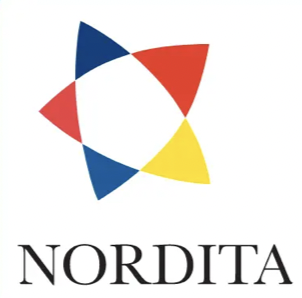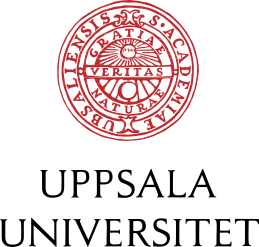- Indico style
- Indico style - inline minutes
- Indico style - numbered
- Indico style - numbered + minutes
- Indico Weeks View
EUROSTRINGS 2025 - COST Action Theory-Challenges General Meeting
→
Europe/Stockholm
Auditorium 5 (Albano Building 2)
Auditorium 5
Albano Building 2
, , , , , , , , ,
Description
Scope
Eurostrings is a series of annual conferences gathering researchers from all over Europe and elsewhere, working on string theory, gauge/gravity duality, quantum gravity and quantum field theories, and the relations among them. Previous Eurostrings conferences were held in Southampton, Gijon, Lyon, London, Milano, Leuven, Cambridge.
Themes and program schedule
The conference will feature both review and research talks reflecting recent developments in research on String Theory.
Invited speakers
Review talks:
Sameer Murthy (King's College London)
Sakura Schafer-Nameki (Oxford University)
Roberto Tateo (University of Turin)
Plenary talks:
Agnese Bissi (ICTP Trieste/Uppsala University)
Lorenz Eberhardt (Amsterdam University)
Yolanda Lozano (University of Oviedo)
Andre Lukas (Oxford University)
Martin Sasieta (Brandeis University)
Oliver Schlotterer (Uppsala University)
Fiona Seibold (DESY)
Andy Svesko (King's College London)
Irene Valenzuela (CERN)
Balt van Rees (Ecole Polytechnique)
Benoit Vicedo (University of York)
Ziqi Yan (Nordita)
Contributed talks:
Ankit Aggarwal (TU Wien)
Guillermo Arias-Tamargo (Imperial College)
Erica Bertolini (Dublin Institute for Advanced Studies)
Ilija Buric (Trinity College Dublin)
Franz Ciceri (École normale supérieure, Lyon)
Andrea Dei (Chicago University)
Davide Fioravanti (University of Bologna)
Jackson Fliss (Cambdirge University)
Julius Grimminger (Oxford University)
Romuald Janik (Jagiellonian University)
Falk Hassler (University of Wrocław)
Emil Have (Niels Bohr Institute)
Troels Harmark (Niels Bohr Institute)
Johan Henriksson (CERN)
Jani Kastikainen (Wurzburg University)
Maria Knysh (Vrije Universiteit Brussel)
Ziwen Kong (DESY)
Yixuan Li (University of Padua)
Jeremy Mann (King's College London)
Victor Mishnyakov (Nordita)
Pierluigi Niro (SISSA)
Alexia Nix (University of Iceland)
Davide Polvara (Hamburg University)
Bo Sundborg (Stockholm University)
Fridrich Valach (Charles University)
Outreach public lecture
The Role of Science in Times of Geopolitical Uncertainties
Title: Impact of Geopolitics on COST
Speaker: COST Director Ronald De Bruin
Title: Science at the Crossroads: Promises and Perils
Speaker: ISC President-elect Robbert Dijkgraaf
Date: Tuesday August 26
Click here for registration and further information.
Satellite event
The meeting will be combined with a 1-day Fest for Joe Minahan on Friday, where the talks will be centered around Joe's research interests. Participants at Eurostrings are invited to attend the Friday talks, at no extra cost.
Dates and Venue
Aug 25-28, Auditorium 5, Albano Campus building 2, Stockholm, Sweden.
Note: this event will be livestreamed on the Action's YouTube Channel:
Registration
Registration for this event is now closed.
Advisory Committee
Pablo Bueno, Roberto Emparan, Daniel Grumiller, Henrik Johansson, Elias Kiritsis, Charlotte Kristjansen, Yolands Lozano Gomez, Fernando Marchesano, Ricardo Monteiro, Sara Pasquetti, Silvia Penati, Michela Petrini, Boris Pioline, Jan Plefka, Andrea Puhm, Diego Rodriguez Gomez, Henning Samtleben, Koenraad Schalm, Andreas Stergiou, Antoine Van Proeyen.
The COST Action
The aim of the COST Action "Fundamental Challenges in Theoretical
Physics" is to develop a comprehensive approach for studying
strongly-interacting systems in classical and quantum physics. The
Action brings together theoretical and mathematical physicists with
expertise in quantum field theory, string theory, gravity, geometry and
information theory, establishing the first network of this kind centred
around Europe. You can join the action by clicking here.
COST Leadership
Alessandro Sfondrini (Action Chair), Piotr Sułkowski (Action Vice-chair), Diego Rodriguez-Gomez, Predrag Dominis Prester, Nicolaos Toumbas, Martin Cederwall, Riccardo Borsato, Nils Carqueville.
Sponsored by:
![]()
![]()
Contact
Participants
Aaron Poole
Abhigyan Saha
Abhishek Chowdhury
Adam Bac
Adam Keyes
ADRIAN KHALIL LOPEZ RAVEN
Adrian Sanchez Garrido
Agnese Bissi
Alberto Ruffino
Alejandro Ruiperez
Alessandro Georgoudis
Alessandro Sfondrini
Alexander Taskov
Alexia Nix
Alfredo Gonzalez Lezcano
Ali Fatemiabhari
Alice Luscher
Ana Climent
Ana Djordjevic
Anayeli Ramirez
Anders Wallberg
Andre Lukas
Andre Oliveira Pinheiro
Andrea Conti
Andrea Dei
Andrea Mattiello
Andrea Zanetti
Andrew Svesko
Angèle Lochet
ANKIT ANAND
Anton Nedelin
Arindam Bhattacharjee
Arundhati Goldar
Arvind Shekar
Augustus Brown
Bartosz Pyszkowski
Beat Nairz
Bengt E.W. Nilsson
Benoit Vicedo
Bercel Boldis
Bob Knighton
Boris Pioline
Charles Thull
Charlotte Kristjansen
Chawakorn Maneerat
Chiara Mascherpa
Chris Hull
Christian Copetti
Christoph Sieling
Colin Sterckx
Coraline Bacq
Daniel Grumiller
Daniel Mata Pacheco
David Osten
Davide Bason
Davide Bonomi
Davide Fioravanti
Davide Polvara
Dean Carmi
Deniz Bozkurt
Deobrat Singh
Diego Pardo Santos
Diego Rodriguez-Gomez
Dimitrios Chatzis
Dimitrios Toulikas
Domenico Seminara
Dominik Neuenfeld
Dongming He
Dripto Biswas
Eggon Galvão
Eirik Eik Svanes
Eleonora Svanberg
Elias Furrer
Elias Kiritsis
Elisa Iris Marieni
Emil Albrychiewicz
Emil Have
Emilie Despontin
Enrico Marchetto
Eric Lescano
Erica Bertolini
Evangelos Tsolakidis
Evita Verheijden
Fabio Billiato
Fabrizio Aramini
Falk Hassler
Fanny Eustachon
Felix Tellander
Fiona Seibold
Francesco Bedogna
Francesco Mangialardi
Francesco Mignosa
Francesco Russo
Franz Ciceri
Fridrich Valach
Gabriel Arenas-Henriquez
Gerben Oling
Giuseppe Casale
Giuseppe Di Giulio
Guillermo Arias-Tamargo
Guillermo Mera Álvarez
Henning Samtleben
Henri Scheppach
Henrik Johansson
Himanshu Chourasiya
Himanshu Parihar
Ilija Buric
Irfan Mahmood
Iva Lovrekovic
Jackson Fliss
Jakob Hollweck
James Ratcliffe
James Wynne
Jani Kastikainen
Jarne Moens
Javier Magan
Javier Subils
Jaydeep Kumar Basak
Jeremy Mann
Joao Vilas Boas
Joel Karlsson
Johan Henriksson
Jonah Baerman
Jonathan Karl
Joseph Minahan
Juan Hernandez
Julian Kupka
Julio Virrueta
Julius Grimminger
Julius JULIUS
Jun Liu
Kajal Singh
Keith Glennon
Kimyeong Lee
Koenraad Schalm
Konstantin Baune
Konstantin Zarembo
Kunal Gupta
Larus Thorlacius
Lavish Kumar Aidasani
Leonardo Bossi
Lior Benizri
Lorenz Eberhardt
Lorenzo Iacobacci
Lorenzo Ruggeri
Luca Romano
Lucas Santos Sousa
Ludvig Chen
Madhav Sirohi
Magdalena Larfors
Marcus Sperling
Maria Foteini Kallimani
Marina David
Mario De Marco
Marius Gerbershagen
Martin Sasieta
Masamichi Miyaji
Matteo Kevin Crisafio
Matthew Blacker
Matthew McGeagh Roberts
Matthias Harksen
Max Guillen
Max Velásquez Cotini Hutt
Maxim Pavlov
Maxim Zabzine
Mehdi Ameri
Michal P. Heller
Michel Pannier
Michele Del Zotto
Mikhail Alfimov
Mile Vrbica
Ming Yang
Minghao Gao
Mohammed Charkaoui
Måns Henningson
Nat Levine
Navonil Neogi
Nicola Andrea Dondi
Nicolaos Toumbas
Nicolò Primi
Niels Obers
Noé Suchel
Olga Papadoulaki
Oliver Schlotterer
Oscar Henriksson
Palash Singh
Panagiotis Leivadaros
Panos Betzios
Paolo Di Vecchia
Paul Luis Roehl
Pawel Caputa
Philine van Vliet
Pierluigi Niro
Pietro Glorioso
Pietro Longhi
Pietro Moroni
Predrag Dominis Prester
Priyadarshi Paul
Quang Loc Tran
Quim Llorens
Radoslav Rashkov
Raffaele Marotta
Rishi Mouland
Roberto Tateo
Rodrigo Schmidt Pitombo
Romuald Janik
Ronnie Rodgers
Ruben Monten
Rui Sun
Ryo Suzuki
SAIKAT BISWAS
Saki Koizumi
Salvatore Mancani
Sameer Murthy
Saskia Demulder
Sebastian-Philip Harris
Sebastien Reymond
seppe geukens
Sergey Frolov
Sergio Benvenuti
SERGIO ERNESTO AGUILAR GUTIERREZ
Silvester Borsboom
Silvia Georgescu
Simon Ekhammar
Simon Pekar
Siyul Lee
Stefan Djordjevic
Stefano Baiguera
Stefano C. Lanza
Stefano Trezzi
Stephane Detournay
Subhadeep Rakshit
Subham Dutta Chowdhury
Sungjoon Kim
Tancredi Schettini Gherardini
Tobias Hössel
Tomeu Fiol
Tommaso Morone
Tommaso Pedroni
Tomás Ortín
Torben Skrzypek
Tristan McLoughlin
Troels Harmark
Ulf Lindström
Unai De Miguel Sárraga
Upamanyu Moitra
Valentin Benedetti
Valentina Giangreco Puletti
Vasileios Letsios
Vatsal -
Vincent Van Hemelryck
Vit Sriprachyakul
Vito Pellizzani
Vittorio Larotonda
Watse Sybesma
William Harding
Xiangwen Guan
YACOUB HENDI
Yixuan Li
Yolanda Lozano
Ziqi Yan
Ziwen Kong
- +74





